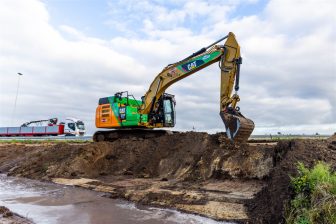New European legislation to boost rail freight
Rail freight in Europe will be given a boost thanks to new European Union rules designed to foster the development of a high-quality rail infrastructure management at international level. The new legislation, published 2010-10-20 in the Official Journal, makes it mandatory to create a European rail network for competitive freight based on international freight corridors. This will help to reinforce cooperation between infrastructure managers and make rail freight services become more competitive and attractive.
European Commission Vice-President Siim Kallas, responsible for transport, said: “In my vision of railways for 2050, they would be dominant in freight transport over distances greater than 300 km. The corridors, one-stop shops and increased cooperation covered by this legislation will enable rail freight providers to attract additional customers to this environmentally friendly mode of transport. It is another step towards the realisation of the dream.”
The new regulation
This regulation is aimed at developing high-quality rail infrastructure at an international level. It will enable the creation of nine rail freight corridors linking the main industrial regions of Europe.
Improved operations on international rail freight corridors will result from stronger cooperation between rail infrastructure managers on various operational issues, such as coordination of investments and works, capacity allocation and traffic management with due guarantee given to rail freight in terms of performance, reinforced cooperation with terminals, centralised publication of conditions for access and accrued powers for regulatory bodies to monitor non-discriminatory access. To this end, infrastructure managers will have to put in place a suitable governance structure for each corridor.
Shippers, forwarders and combined transport operators will be allowed to request capacity over these corridors to meet their logistic needs under the best conditions through dedicated one-stop shops. The levels of quality of the supply of rail infrastructure services along freight corridors will be constantly reviewed and published.
Why is this regulation needed?
International rail freight transport has suffered in recent years from the lack of sufficient cooperation and voluntary coordination between infrastructure managers which prevented the level of services from being raised. This regulation will boost cross-border cooperation and coordination to give fresh impetus to the rail freight sector along major international rail corridors while taking full advantage of existing initiatives to modernise rail infrastructure under the TEN-T and cohesion policy and to deploy the European Rail Traffic Management System (ERTMS).
Having these rail corridors fully operational will lead to more capacity for freight on these routes, while enabling operators to offer a better service, in terms of increased punctuality and shorter journey times. This will help rail freight to better compete with other transport modes.
Next steps
The new regulation will enter into force on 9 November 2010.
More information
eur-lex.europa.eu/LexUriServ/LexUriServ.do?uri=OJ:L:2010:276:0022:0032:EN:PDF
ec.europa.eu/transport/rail/index_en.htm
U las zojuist één van de gratis premium artikelen
Onbeperkt lezen? Profiteer nu van de introductieaanbieding voor € 10,- per maand.
Bent u al abonnee?



